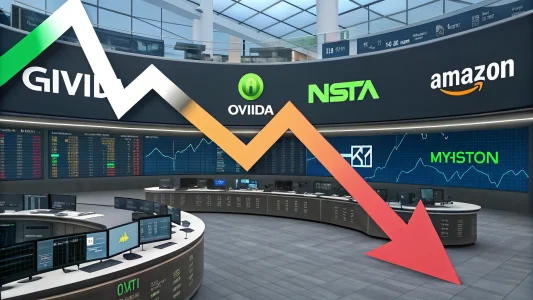Small companies often have a family-like feel. Employers want to ensure their workers have a plan in place for retirement and long-term financial planning. Small businesses can offer a 401(k) plan or match contributions to spur savings.
Tax laws and regulations can make offering a 401(k) complex. Some businesses turn to alternatives such as payroll deduction for IRA, where employees can allocate a certain amount of their check directly into their savings. Another option is a defined benefit plan, where the employer promises a promised pension amount each month upon retirement. Those who are self-employed might turn to a Simplified Employee pension plan-IRA.
Most small to medium businesses with employees will turn to the more traditional 401(k). If offering one, you must ensure that you follow proper retirement plan compliance. A checklist to ensure you remember the big tasks you must complete is crucial.
Table of Contents
ToggleRisks of Noncompliance
Brands have a fiduciary responsibility to safeguard their employees’ retirement savings. You could be subject to legal action if you fail to comply and rack up fines, penalties, and settlement costs. Many companies seek professional advice and turn to 401(k) compliance testing to ensure they avoid the consequences.
Some of the common areas where companies fall out of compliance include:
Timely Deposits
Employers must immediately deposit employee contributions into the retirement plan within seven business days. Larger companies with over 120 participants get until the 15th business day in the month following the contribution deduction.
Filing Paperwork Late
Companies must file Form 5500 annually with the Department of Labor as mandated by the Employee Retirement Income Security Act (ERISA).
Failing to Ensure Loans Follow the Rules
Some 401(k) plans let workers take a loan and repay themselves. This can be a desirable option when interest rates are high since employees pay themselves the interest instead of a bank. However, if the plan doesn’t follow the guidelines for loans, including who and what qualifies, they can run risks with compliance.
Missing Nondiscrimination Testing
All 401(k) plans must not discriminate against employees or favor others. The IRS requires yearly testing to ensure this. If the company fails the testing, it must fix problems quickly or risk plan disqualification.
401(k) plans require understanding the rules and regulations of your company’s fiduciary responsibilities and meeting deadlines. Follow the checklist below to cover the major points of retirement plan compliance. It’s still wise to thoroughly review and test your plan every year and work alongside a financial specialist to ensure you get all the critical details.
Retirement Plan Compliance Checklist
Offering a 401(k) may be part of a larger plan to retain skilled workers and compete with other businesses in your industries for top candidates. However, small businesses running a retirement plan must comply with ERISA. The good news is that organizations of any size can navigate planning waters with details on expectations.
Some of the standard things you must do to ensure you are within the rules include:
1. Review the Plan Frequently
It’s natural for companies to become more lax as time goes on. You may abide by the policies laid out for the retirement plan closely at first. As new employees enter the workplace with various needs, it becomes easier to let a few things slide. Part of your fiduciary responsibility is looking things over and ensuring all plan elements are fair to everyone, from the CEO to the janitor.
2. Understand ISO Certification
The International Organisation for Standardisation (ISO) ensures everyone meets standards to maintain financial stability worldwide. Seeking ISO certification in any economic endeavor keeps everything consistent. While financial institutions tend to receive ISO certifications, make sure any plans you offer adhere to ISO rules.
3. Create Checks and Balances
Some 401(k) standards are more common sense than others. Adherence to your fiduciary responsibilities means creating checks and balances to ensure employees protect workers’ investments.
Do multiple people check to ensure payments into the retirement accounts occur promptly? Small companies may have a high employee turnover rate. You could start with several people in charge of the 401(k) plan, but as people leave, that could change. One or two people without checks or balances might abuse the system, cause your company to lose eligibility for a 401(k) plan, and subject you to lawsuits.
Conduct a quarterly review of who is responsible for what aspects of the plan. Add additional measures where needed. Every person working with money should have a nonbiased employee or outside party auditing their work. Watch out for conflicts of interest.
4. Send Notifications on Time
Keeping up with notices of changes in the plan, how much the account earned, and listing contributions can be time-consuming. Thankfully, the Notice and Access Rule allows companies to send employees notices electronically if they are already part of the plan. New workers may have to opt in for digital communications.
The average retiree has $170,726 saved when they need ten times their annual salary to live comfortably. As retirement draws near, they may need regular reminders of where their account stands and how much more they can legally contribute in a given year.
Automating the information distribution by using financial planning software saves companies time and keeps employees informed.
5. Train Staff to Keep Accurate Records
Accuracy in reporting is crucial when handling other people’s money. The IRS and the Department of Labor have strict rules to ensure workers’ funds remain safe. Recordkeeping can make or break a plan. Train accounting staff to keep meticulous records to avoid confusion.
6. Secure Data
Your company is responsible for securing employee data and not exposing account information to would-be hackers. Install the latest virus protection and firewall software. Train employees to recognize attacks. For example, phishing is one of the most common ways cybercriminals gain access to sensitive information. Regularly update systems, invest in the best IT security professionals you can afford, and teach employees and HR to avoid data breaches.
7. Onboard New Employees
401(k)s must be accessible by all qualified employees. When a new worker starts at your firm, give them enrollment forms, beneficiary paperwork, plan summary, and fee disclosures and ensure they know they’re eligible to sign up.
Not everyone will want to take advantage of the opportunity. The business’s job is to confirm that employees have the option and to show them how it works. HR is responsible for onboarding, so have them and the accounting department work together to onboard new employees appropriately.
8. Review IRS Regulations
The Internal Revenue Service (IRS) frequently releases new guidelines. Each tax year may bring new requirements for small businesses and retirement plans. Make it a point to regularly review rules and adjust contribution limits to adhere to IRS requirements.
Checklist of Tasks to Complete by Quarter
Because employer retirement plans are complex, waiting until the end of the year to review them can cause you to miss crucial fixes you need sooner. Break down the areas by quarter and look at these compliance items for a smoother transition from one year to the next. The tasks below are in addition to the yearly ones listed above.
First Quarter
- Review plans with employees. Your Gen-X workers may need reassurance about how much to save for retirement. Around 35% of the 65 million Gen Xers in the USA have under $10,000 saved.
- Send benefit statements for the fourth quarter to participants within the first 45 days of the new quarter.
- Encourage employees to make contributions for the previous tax year for a break.
Second Quarter
- Send benefit statements from the first quarter within 45 days of the new quarter.
- Distribute excess deferrals over the IRS cap to employees. These extra payments aren’t subject to 10% individual taxpayer penalties for early withdrawal.
- Check if employees are of age to receive the required minimum distributions (RMDs).
Third Quarter
- Give out second-quarter benefit statements within 45 days of the new quarter.
- File form 5500 or request a 75-day extension.
- Send a summary of the plan description to all participants.
- Distribute the plan’s annual report for the previous year.
Fourth Quarter
- Distribute third-quarter benefit statements within 45 days of the new quarter.
- Send notices about safe harbor 401(k) plan adjustments, automatic enrollment terms, or other changes.
- Correct any compliance failures from the ADP/ACP test.
- Pay 10% excise tax on contribution overages.
At the end of each quarter, cash out any small balances on employees who’ve left your company. Look at loan defaults and other open accounts that need handling. Reviewing bookkeeping quarterly saves time before reporting is due and keeps compliance simple.
The Benefit of Retirement Plans
Offering a 401(k) may attract top applicants in your industry. Small and medium businesses may need help competing with larger corporations’ pension plans. However, if you offer contribution matches and solid golden years investment options, you may be more attractive as an employer due to other perks and a better company culture.
Ideally, employees will stick with you from the day they start work until they’re ready to retire. All their years of loyalty should pay off in many happy retirement years. Money worries shouldn’t enter the equation. Offering a way for them to save for their golden years is critical. Although brands must navigate complex regulations and laws, the payoff to your staff is worth the effort.















